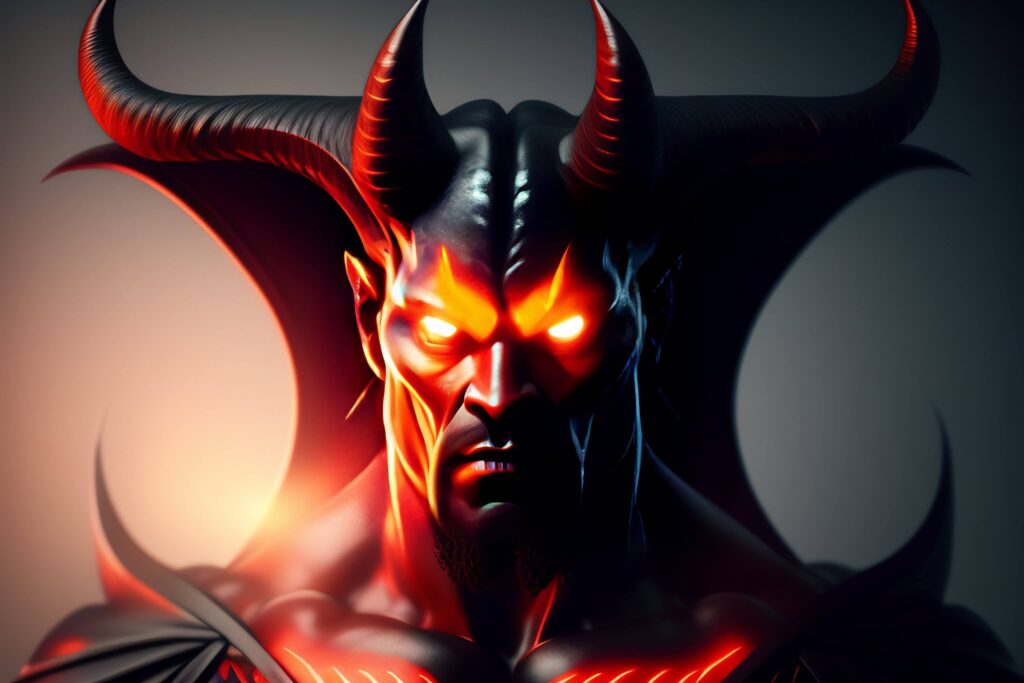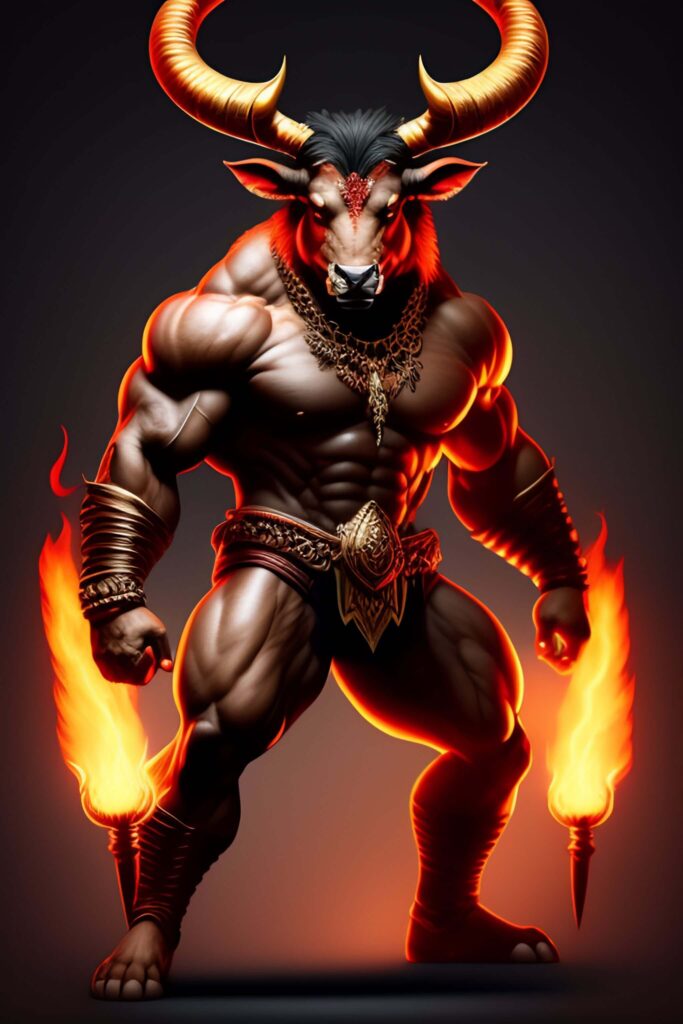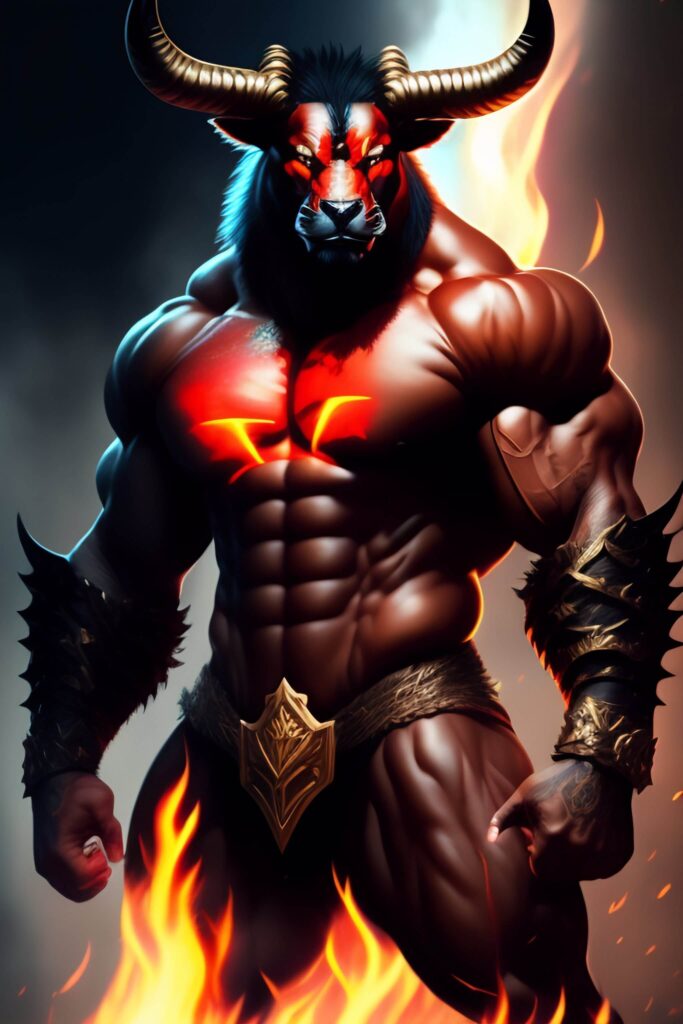In Ancient Greek Mythology, the Minotaur
In ancient Greek mythology, the Minotaur looms as a formidable symbol of terror and the unknown. With the head of a powerful bull and the body of a human, this monstrous creature held immense power and was often depicted in art as a fierce beast with an insatiable hunger for human flesh. Yet, beneath the frightening exterior lies a deeper, more complex story. The Minotaur is said to have spawned from the union of Pasiphae, a human queen, and a white bull gifted by the sea god Poseidon. It was kept in a labyrinth, a maze-like structure built by the greatest architect of the time, to protect the kingdom from its destructive power. The labyrinth eventually became the setting for numerous tales of heroes and adventurers who dared to challenge the Minotaur. Though it may be difficult to believe such a creature could ever exist, the Minotaur remains a fascinating and enduring symbol of the ancient Greeks’ love of storytelling and their enduring fascination with the power of the unknown.

Minotaur is the Product of Broken Promises and Cursed Love
According to Greek mythology, the Minotaur was born out of a broken promise and cursed love. Minos, the king of Crete, was supposed to offer a strikingly attractive bull to Poseidon, but instead, he deceived the sea god by exchanging the handsome bull with a lesser one. Furious at Minos, Poseidon made Pasiphaë, the queen of Minos, fall deeply in love with the handsome bull. Pasiphaë’s infatuation was so intense that it led her to devise a plan wherein she could mate with the bull and give birth to the savage creature that would become known as the Minotaur. This offspring had a human body and the head of a bull, and it was kept in a labyrinth, where it was fed on human flesh. The tragic tale of Minotaur’s birth is a grim reminder that deception and ill-fated love can ultimately lead to disastrous consequences.
The Ancient Greek myth of Pasiphaë and the Minotaur
The ancient Greek myth of Pasiphaë and the Minotaur is a tale of seduction, embarrassment, and a labyrinthine prison. The heated Pasiphaë, overcome with desire, entices a handsome bull and makes love with it, leading to the birth of a half-man, half-beast creature, the Minotaur. Ashamed of his unusual offspring, Minos enlists the expertise of Daidalos to create a labyrinth in which to hide the beast. The construction is complex and extensive, ensuring the Minotaur will never be able to find his way out. It is here that he is doomed to live out his days, alone and confined. That is, until the hero Theseus arises. With the help of Princess Ariadne, Theseus enters the labyrinth and battles the Minotaur, ultimately emerging victorious. This epic tale is fraught with vivid imagery and powerful emotions, as the characters navigate love, shame, and the enduring quest for freedom.
The Minotaur from Dante’s Divine Comedy
Dante’s new song Hell is a terrifying depiction of the underworld, where souls are punished for their sins. In one haunting scene, Dante comes face to face with the Minotaur, a creature of Greek mythology with the body of a man and the head of a bull. The infamous creature was thrown into hell after being slain by Theseus. French painter Gustave Dore’s illustration of the Minotaur is a vivid and haunting depiction of the beast, displaying its grotesque features, exaggerated muscles, and ferocious demeanor. This scene showcases the artistic and literary prowess of Dante, as well as highlighting the enduring appeal of Greek mythology. The Minotaur’s inclusion in Dante’s hell reinforces the theme of punishment for wrongdoing and serves as a cautionary tale for the readers. The inclusion of Dore’s illustration further adds to the ominous and malevolent atmosphere of Dante’s inferno. Overall, Dante’s representation of the Minotaur in his underworld serves as a powerful symbol of punishment, retribution, and fear.
The Minotaur’s life was one of tragedy and confinement
The Minotaur’s life was one of tragedy and confinement. He was neither fully human nor fully bull, and his existence was marked by isolation and imprisonment. Trapped in a maze, he was forced to spend his days wandering aimlessly, unable to escape his labyrinthine confines. It wasn’t until Theseus, a hero, arrived on the scene that the Minotaur’s fate was sealed. Theseus hunted him down and killed him, turning his once-living body into mere firewood. The Minotaur’s life was a sad one, marked by loneliness and despair. Despite his fearsome appearance, he never truly had the chance to live his life, cut off from the world by walls and bars that prevented him from doing anything more than wandering aimlessly. In his tragic end, he serves as a warning to those who would seek to marginalize those who are different, as the Minotaur was made a monster simply because of his appearance.
The Minotaur Born to be a Monster
The Minotaur’s monstrous appearance is not something that he had control over. He did not choose to be born with the head of a bull and the body of a man. It was the result of the gods’ curse, brought upon him by his father, King Minos, and his mother, who immortalized his bestial essence through their carnal desires. The Minotaur’s ferocious appetite for human flesh is not something that he actively desires either, but rather a product of his cursed lineage. He is not to blame for his gruesome cravings, just as a lion is not to blame for its instinctive need to hunt for food. Despite the Minotaur’s terrifying physical form, he is not necessarily an evil creature. In fact, the Minotaur typically does not actively seek out human prey; he is simply trapped in the labyrinth and fed with human sacrifices thrown to him as part of his father’s twisted laws. The tragic fate of the Minotaur, born into a world he did not choose and cursed with an insatiable hunger that he cannot control, is a reminder of the innate complexity of all living beings, regardless of how they may appear on the surface.
The Minotaur: Half-Human Half-Beast
Born as a half-human being, the character in question was cursed with a unique and gruesome hunger that could only be satisfied by consuming the flesh of other humans. This aberration was not of his doing, but rather the consequence of a series of irresponsible and deceitful actions by others. The queen who laid with a bull, the bull itself, and Minos who deceived the gods were all culprits in this situation. It was their actions that ultimately led to the birth of this unnatural being. However, the true fault lay with Poseidon, the god with a notorious temper who granted a wish made by the deceitful King Minos. This was a wish to produce a white bull for sacrifice but instead, Poseidon caused the queen to fall in love with it. All of these events combined resulted in an innocent half-human with a grotesque need to consume his fellow beings. The consequences of this ancient tragedy were severe and unquestionably cruel, but the true culprit responsible for this lost soul’s affliction was Poseidon.

Poor Minotaur endured immense suffering throughout his life
Poor Minotaur endured immense suffering throughout his life. But his agony didn’t end with his death. In fact, it was only amplified when he was cast into hell after Theseus killed him. Dante’s depiction of the Minotaur in his new song Hell is a testament to the severity of his torment. It is a terrifying scene where Dante encounters the monstrous creature in his infernal abode. The vivid description paints a picture of the Minotaur, a hulking figure with the head of a bull and the body of a man, roaring in anguish and bellowing out in rage. The anguish he feels is palpable, as he lashes out at Dante with all the fury of the underworld. It is a stark reminder of the consequences of one’s actions and the toll that they can take, even in death. The gravity of Minotaur’s situation is unsettling, but it drives home the importance of empathy, and the need to treat our fellow beings with kindness and compassion.
The Meaning behind the Minotaur Myth
When we acknowledge the monsters that live inside us, we become more empathetic towards our opponents who we may have previously deemed as monsters themselves. This newfound self-awareness allows us to recognize that we are all flawed beings capable of making mistakes. Therefore, treating someone as a villain and ourselves as the hero who must defeat them is an immature perspective. Instead, it is important to view every individual as a complex human being, just like us. For example, if we have a deep-rooted fear of failure, that fear may fuel negative behavior, causing us to lash out or act in a harmful way. By recognizing this monster within ourselves, we can learn to empathize with others who may be acting out of their own fears and insecurities. Similarly, if we perceive someone as a heartless bully, we can try to understand the pain and difficulties that may be driving their behavior. This shift in mindset can lead to more compassionate interactions and a less hostile world. In short, acknowledging our own monsters leads to a greater understanding of others and allows us to view everyone as individuals, rather than as simple heroes or villains.
Minotaur: Is there No Monster in You?
When discussing monsters and the way they see themselves, it’s important to consider the different choices they might have. For some, the idea of being labeled a monster might be too much to bear, and they might reject the label entirely. These monsters might beg others not to treat them with violence or fear, instead asking to be treated like any other human being. Others might embrace the term and lean into their monstrous qualities, acknowledging that they are different from other beings and taking pride in their unique attributes. Finally, some monsters might take a more philosophical approach, recognizing that the label of “monster” is something that has been placed on them by others, rather than a true reflection of who they are as individuals. They might reject the label entirely, striving to be seen as a normal person in the eyes of others. Ultimately, each monster will have its own response to being labeled as such, and it’s important to remember that there is no one right way for them to react. By exploring these different perspectives, we can gain a deeper understanding of the complex relationships between monsters and others in our world.
Minotaur In Religion
Augustine and Montaigne both argued that the concept of a “monster” is rooted in human perception and subjective interpretation rather than any objective reality. From God’s perspective, they claimed, there is no such thing as a monster. Instead, these thinkers believed that people are quick to judge and label others without fully understanding their individual circumstances. For example, Montaigne wrote about how he once met a woman with an extra breast, which some might consider monstrous. However, when he learned about her struggle to feed her children, he realized that her extra breast was actually a valuable asset. Similarly, Augustine acknowledged that those with physical differences might be seen as “monstrous,” but argued that from a spiritual perspective, all people are equal in the eyes of God. By questioning the very idea of “monstrosity” and urging readers to look beyond surface appearances, these philosophers challenged conventional assumptions about what it means to be “normal” or “abnormal.”
What Makes a Monster a Monster?
Monsters are a curious phenomenon, often seen as frightening, otherworldly creatures that lurk in the shadows. But what makes a monster a monster? It is not simply their appearance or behavior, but rather the distinction they provide. Without the idea of a monster, what would distinguish the ordinary from the extraordinary? If everyone were normal, there would be no need for the term “monster,” as it would lose its significance. Similarly, if everyone were a monster, the term would lose its meaning, as no distinction would need to be made. The notion of “normal” is itself a construct, created to separate those who fit within society’s expectations from those who do not. It is the fear of the unknown, the fear of the other, that drives the creation of monsters. They are the embodiment of our nightmares, the things that we cannot control, that we cannot understand. But it is precisely this fear that makes them so powerful, so evocative. The monster becomes a vessel for our anxieties and insecurities, our desire for something beyond the ordinary. They are a reminder of the chaos that lies just beneath the surface, of the possibility of the unexpected, the unimaginable. Without monsters, we would lose the ability to explore the boundaries of our own imagination, to confront the darkness that lies within us all. They are the mechanism of distinction, the thing that sets us apart from one another, that reminds us that we are all unique, all different, all a little bit monstrous.

Conclusion
If you’re one of those who are tormented by monster nightmares, then the firstborn dream is what I highly recommend. It’s like a breath of fresh air that will take away all your anxieties and leave you feeling serene. But the question arises – are you a butterfly dreamer or a normal person who dreams monsters? This question gets to the core of our identity and its fragility. Sometimes, we may feel that we are not normal because we frequently dream of monsters. However, it’s okay to have these dreams – they are a part of our subconscious. The dream world is an extension of our personalities, and it’s common to have dreams about things that scare us. By embracing these dreams, we become more connected to our true selves. It’s not about being labeled as a “butterfly dreamer” or a “monster dreamer,” but rather about accepting all of who we are. This acceptance will make us whole and allow us to live a more fulfilling life. So, embrace who you are and hold onto the firstborn dream – it will guide you through the darkness and into the light.






